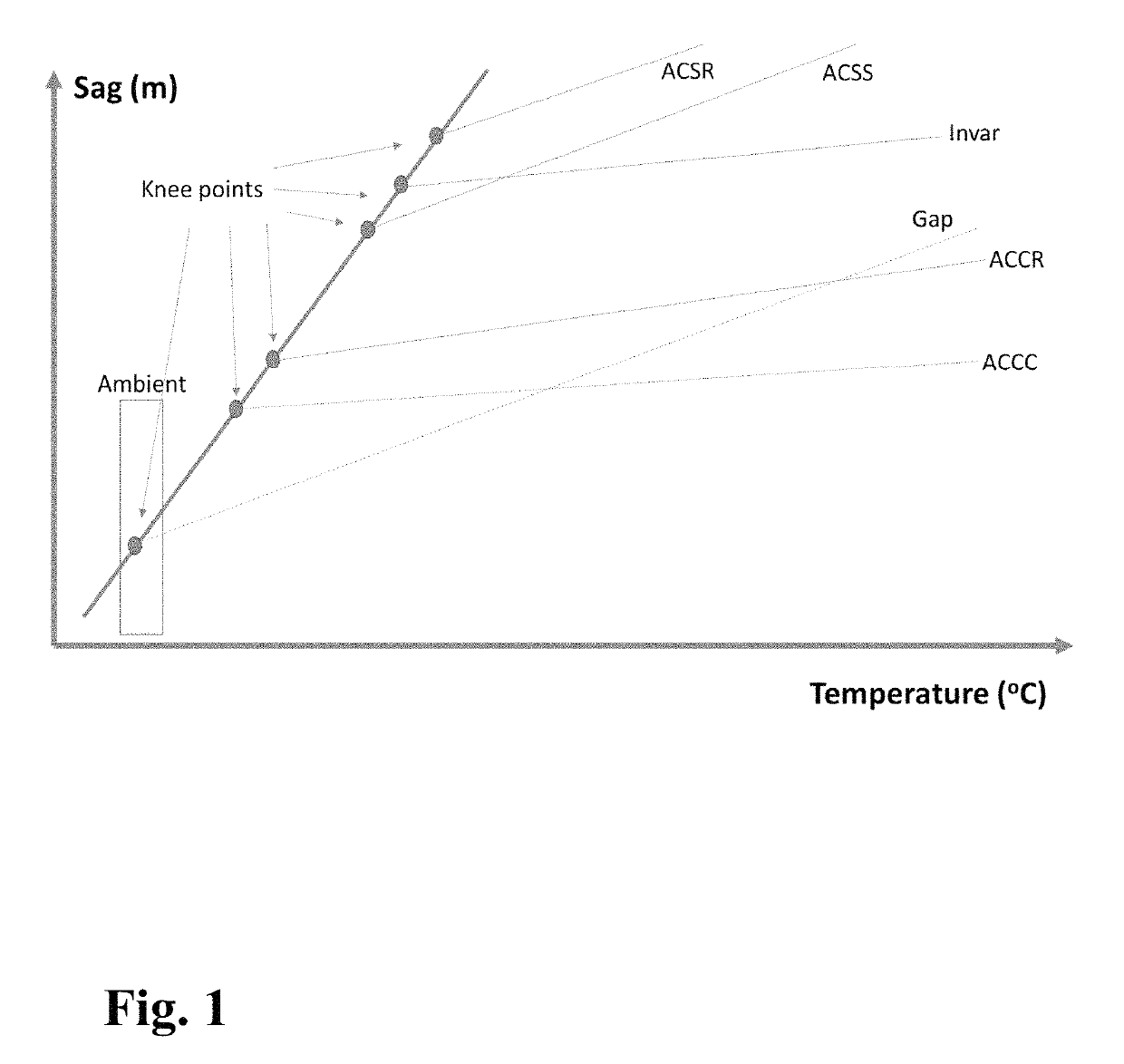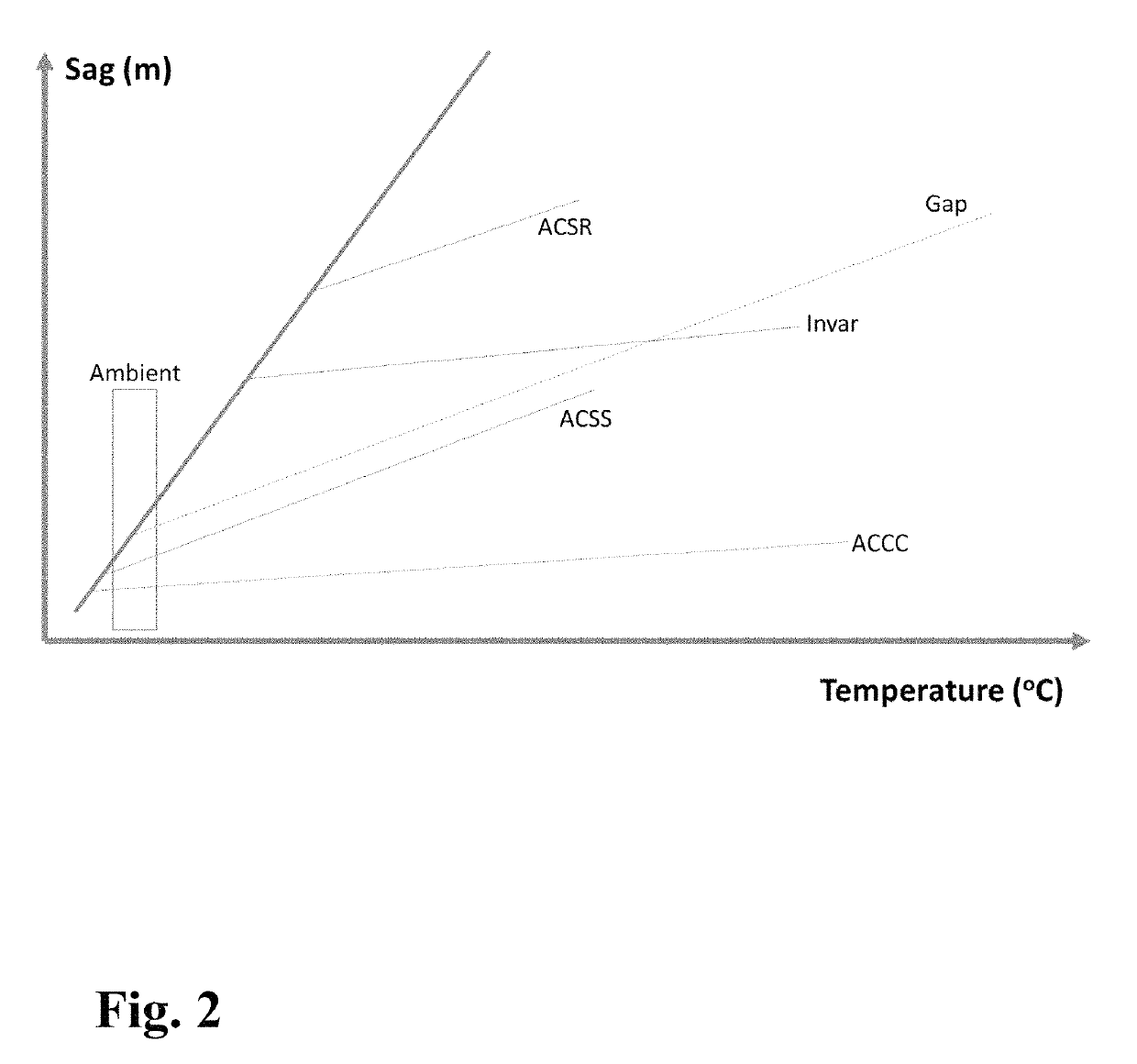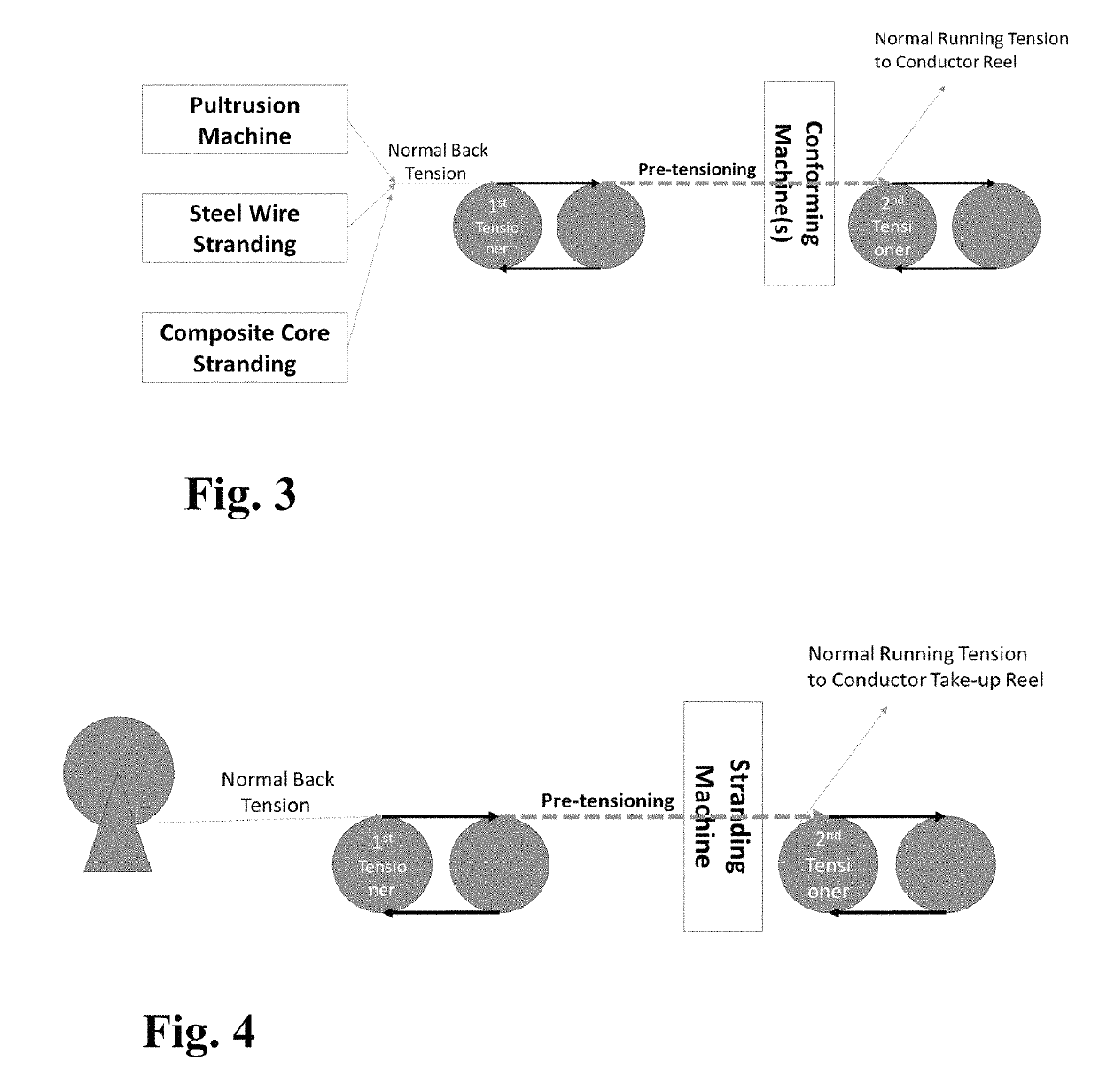Method of manufacturing an energy efficient electrical conductor
a manufacturing method and technology for electrical conductors, applied in the field of electrical conductors, can solve the problems of limiting the current carrying capacity of the conductor, requiring special devices and extra labor time from the linemen, and the cost of gap conductors is typically high, so as to reduce thermal sag, reduce thermal sag, and eliminate tensile stress
- Summary
- Abstract
- Description
- Claims
- Application Information
AI Technical Summary
Benefits of technology
Problems solved by technology
Method used
Image
Examples
example 1
on for Reconductoring Applications in Transmission and Distribution Grid
[0069]Transmission line reconductoring is typically in voltage ranging from 110 kv to 500 kv, where existing towers are leveraged as much as possible to reduce project cost and power outage time. Reconductoring may also be done live line, where no outage is scheduled during reconductoring. The primary focus of reconductoring is to maximize line capacity within established clearance constraint and to leverage existing infrastructure. The conductor from this invention is ideal for such application, where the highest packing density in the conductor (almost 100% for the concentric layers, vs typically 93% fill factor in a tightly stranded conductor such as ACCC conductor from CTC Global) will provide the new conductors with highest possible capacity (and lowest resistance and lowest line loss) at normal operating conditions. For emergency conditions, where the conductor is exposed to high temperatures, the conducto...
example 2
on for New Build Applications in Transmission and Distribution Grid
[0075]New build projects often are more sensitive to materials and labor cost (e.g., conductor cost, fitting cost as well as tower cost). Some of the new builds are for long distance transmission and ultra-high voltage where corona effect must be controlled and conductor resistance and line loss must be minimized.
[0076]The embodiment in the invention include the option of stranding around the encapsulated pre-tensioned strength member(s) with additional layer(s) of conductive strands to increase conductor diameter for UHV applications while facilitating easy handling (requiring smaller reels for wrapping). For aluminum conductors in AC circuit of 60 Hz, the skin effect requires a maximum conducting layer thickness to be 17 mm. Large conductors must consider multi-layer configuration. Since significant amount of aluminum have already been pre-stressed under compression, the load and the time required to put the additi...
example 3
on for Special Situations: River Crossing and Ultra-Long Span, Heavy Ice and Corrosion Heavy Regions
[0079]River crossing or ultra-long span applications or heavy ice regions have the same need of compact conductors with high strength and modulus. If the transmission project is thermal sag constrained, partial or full thermal knee point suppression is desirable. If the transmission line sag clearance is driven by the ice load or weight of the conductor, it is desirable to use high strength light weight fiber reinforced composite strength member (s), and 1) either to leverage some or most of the aluminum alloy (such as Aluminum Zirconium alloys, 6201-T81) or copper and copper alloys in load carrying to minimize sag (with less suppression in conductor thermal knee point, i.e., the additional layers of conducting material (beyond the pre-tensioned encapsulating layer with the strength member) is not subjected to additional pre-tension treatment) or 2) to pre-tension the conductor suffic...
PUM
| Property | Measurement | Unit |
|---|---|---|
| thick | aaaaa | aaaaa |
| temperature | aaaaa | aaaaa |
| Tg | aaaaa | aaaaa |
Abstract
Description
Claims
Application Information
 Login to View More
Login to View More - R&D
- Intellectual Property
- Life Sciences
- Materials
- Tech Scout
- Unparalleled Data Quality
- Higher Quality Content
- 60% Fewer Hallucinations
Browse by: Latest US Patents, China's latest patents, Technical Efficacy Thesaurus, Application Domain, Technology Topic, Popular Technical Reports.
© 2025 PatSnap. All rights reserved.Legal|Privacy policy|Modern Slavery Act Transparency Statement|Sitemap|About US| Contact US: help@patsnap.com



